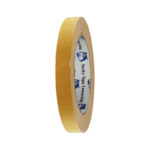In today’s rapidly advancing technological landscape, electronic devices are becoming increasingly compact, powerful, and efficient. However, with this advancement comes the challenge of managing the heat generated by these devices, which can significantly impact their performance, reliability, and lifespan. High-temperature insulation solutions play a critical role in addressing this challenge, providing effective thermal management to ensure the optimal operation of electronic components in demanding environments. Here we will explore various high-temperature insulation solutions tailored for electronics, their applications, benefits, and emerging trends in the field.
Introduction to High-Temperature Insulation for Electronics
Electronic devices, ranging from smartphones and laptops to industrial machinery and automotive systems, generate heat during operation due to the flow of electrical current through components. Excessive heat can degrade the performance of electronic components, leading to reduced efficiency, increased power consumption, and even premature failure. High-temperature insulation materials serve as a barrier to heat transfer, protecting sensitive electronic components from thermal stress and maintaining optimal operating conditions. One such material is Kapton tape, which is widely used for its excellent thermal stability and insulation properties.
Types of High-Temperature Insulation Materials
Several types of materials are commonly used for high-temperature insulation in electronics, each offering unique properties and benefits:
– Ceramic Fibre: Ceramic fibre insulation offers excellent thermal resistance, low thermal conductivity, and high temperature stability, making it suitable for applications where extreme heat is a concern. It is commonly used in industrial furnaces, kilns, and high-temperature electronic components.
– Silicone Rubber: Silicone rubber insulation is flexible, lightweight, and resistant to high temperatures, making it ideal for applications requiring thermal protection and electrical insulation. It is often used in wiring, cables, and connectors in electronic devices.
– Mica: Mica insulation provides exceptional electrical insulation properties and high-temperature resistance, making it suitable for applications where both electrical and thermal performance are critical. It is commonly used in heating elements, electrical motors, and power distribution systems.
– Graphite: Graphite insulation offers high thermal conductivity and temperature stability, making it suitable for applications requiring efficient heat dissipation and thermal management. It is often used in electronic cooling systems, heat sinks, and thermal interface materials.
Another effective material is butyl tape, known for its excellent sealing properties and resistance to high temperatures, making it a versatile choice for various electronic insulation applications.
Applications of High-Temperature Insulation in Electronics
High-temperature insulation solutions find diverse applications in various electronic devices and systems, including:
– Power Electronics: In power electronic devices such as inverters, converters, and rectifiers, high-temperature insulation materials are used to protect semiconductor components from thermal stress and ensure reliable operation at elevated temperatures.
– Automotive Electronics: In automotive applications, high-temperature insulation is critical for protecting electronic components in engine compartments, exhaust systems, and other high-temperature environments. It helps maintain the performance and longevity of electronic control units (ECUs), sensors, and actuators.
– Aerospace and Defence Electronics: In aerospace and defence applications, where electronic systems are exposed to extreme temperatures, high-temperature insulation materials play a vital role in ensuring the reliability and survivability of critical electronics in harsh operating conditions.
– Industrial Electronics: In industrial settings such as manufacturing plants, refineries, and power plants, high-temperature insulation solutions are used to protect electronic control systems, sensors, and instrumentation from heat, moisture, and environmental contaminants.
Benefits of High-Temperature Insulation for Electronics
The use of high-temperature insulation solutions offers several key benefits for electronic devices and systems:
– Improved Reliability: By effectively managing heat buildup, high-temperature insulation helps maintain the reliability and performance of electronic components, reducing the risk of premature failure and downtime.
– Enhanced Efficiency: By minimising thermal stress on electronic components, insulation materials contribute to improved energy efficiency and optimised system performance, resulting in lower power consumption and operating costs.
– Extended Lifespan: High-temperature insulation protects electronic components from degradation caused by heat, moisture, and environmental factors, thereby extending the lifespan of electronic devices and reducing the need for frequent maintenance and replacement.
– Safety and Compliance: Insulation materials with high temperature resistance and flame retardant properties enhance the safety of electronic devices and systems, ensuring compliance with industry standards and regulations for fire protection and electrical safety.
Emerging Trends in High-Temperature Insulation for Electronics
The field of high-temperature insulation for electronics is continuously evolving, driven by technological advancements and market demands. Some emerging trends include:
– Advanced Materials: Researchers are developing new materials with enhanced thermal properties, such as higher temperature resistance, lower thermal conductivity, and improved mechanical strength, to meet the growing demand for high-performance insulation solutions.
– Nanotechnology: Nanomaterials, such as carbon nanotubes and graphene, are being investigated for their potential applications in high-temperature insulation, offering unique properties such as superior thermal conductivity, mechanical flexibility, and chemical stability.
– Multifunctional Insulation: There is growing interest in developing multifunctional insulation materials that combine thermal management with other functionalities, such as electromagnetic shielding, corrosion resistance, and self-healing properties, to address the diverse requirements of modern electronic devices.
– Miniaturisation: With the trend towards miniaturisation of electronic components and devices, there is a need for high-temperature insulation solutions that can provide effective thermal management in compact form factors while maintaining performance and reliability.
Conclusion
High-temperature insulation solutions play a crucial role in ensuring the reliable operation, performance, and longevity of electronic devices and systems in demanding environments. By effectively managing heat buildup and thermal stress, these insulation materials help protect sensitive electronic components, enhance energy efficiency, and extend the lifespan of electronic devices. With ongoing advancements in materials science and technology, the future holds promising opportunities for the development of innovative insulation solutions tailored to the evolving needs of the electronics industry. One such advancement is the increased use of aluminium foil tape, which provides excellent heat reflection and electrical conductivity properties.
In summary, high-temperature insulation for electronics is an indispensable aspect of modern thermal management strategies, offering a wide range of benefits for enhancing the reliability, efficiency, and safety of electronic devices in various applications. As the demand for high-performance electronics continues to grow, the importance of high-temperature insulation solutions will only increase, driving further innovation and development in this critical field.
For more information, visit My Tape Store















